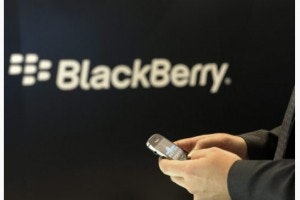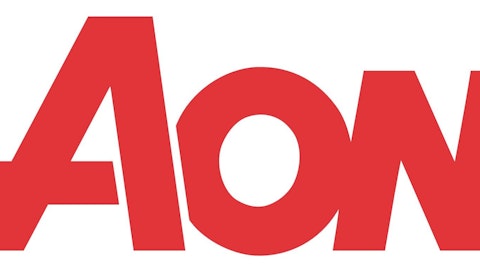Last month, Research In Motion Ltd (NASDAQ:BBRY) CEO Thorsten Heins claimed that the popularity of tablet computers, dominated by Apple Inc. (NASDAQ:AAPL) iOS and Google Inc (NASDAQ:GOOG) Android devices, would wane over the next five years. Heins predicted that computer users would become increasingly dependent on a single computing device, such as a smartphone docked into a workstation, for all their daily tasks. Heins also vaguely hinted that Research In Motion Ltd (NASDAQ:BBRY) would eventually release an all-in-one computer that could function as both a standard and mobile computing device.

Yet Heins’ statement is hardly revolutionary in the tech world. Ever since smartphones became a prevalent part of our daily lives six years ago, companies such as Motorola Mobility Holdings Inc (NYSE:MMI) (now a subsidiary of Google Inc (NASDAQ:GOOG)) and Asus both aspired to create cohesive all-in-one packages, but their products have hardly revolutionized computing.
Are we truly on the brink of a technological revolution where smartphones, tablets and computers will merge into a single device, or will we continue relying on multiple devices synchronized over a cloud network instead? Let’s turn back the clock and examine earlier attempts to create this elusive omni-computer.
Motorola
Motorola Mobility Holdings Inc (NYSE:MMI)’s Lapdock, which was sold from 2011 to 2012, was an ambitious product that resembled a notebook computer. The “computer” had an 11.6” 1366×768 display with a dock in the back that was compatible with select Motorola smartphones. When the smartphone was docked, users were able to surf the web with a full-size keyboard and touchpad, as well as perform basic tasks such as write emails and word processing tasks. By itself, however, the Lapdock was merely a display with control peripherals that lacked the internal components of a computer.
The Lapdock failed for two reasons. First, Motorola’s initial $500 price tag for the dock was the same price as a low-end laptop in 2011. Second, it didn’t run on Google Inc (NASDAQ:GOOG) Android, which had been steadily gaining a hardware following since its 2008 release. Instead, the Lapdock ran on a proprietary version of Linux called Webtop, and only select Android smartphones, such as the Motorola Atrix 4G, were compatible. Google Android could be accessed, but the Lapdock merely offered a resized, not streamlined, version of the mobile desktop.
In other words, the Lapdock died out due to high pricing, a clunky design aesthetic, and a redundant operating system that was eventually killed off.
Asus
Taiwan-based Asus, the fifth largest PC manufacturer in the world, released the first generation of the Padfone in April 2012, but the product remained unknown to most of the international community. This hybrid product was an Android 4.0 smartphone that could slide into the back of a tablet dock to instantly become a tablet. The tablet could then be plugged into a keyboard dock to transform into a traditional laptop. Therefore, the Padfone had the unique distinction of actually being a phone, tablet and a laptop in a single package.
The Padfone 2 was recently released, and finally reached international markets last month. By then, however, Samsung (NASDAQOTH: SSNLF) was in firm control of the global Android market, and the Padfone 2 was met with a muted response. The Padfone 2 was everything that Heins had prophesied, but it landed with a thud for the same reason as Motorola’s Lapdock – pricing.
Today, the Asus Padfone 2 still sells for $700 to $800, while mid-range Windows 8 laptops cost around $500. Meanwhile, many higher-end Ultrabooks and Apple’s MacBook Air are all priced between $800 and $1,000.
Apple and Samsung
Apple Inc. (NASDAQ:AAPL) and Samsung have been smarter and more conservative with their attempts to create the elusive omni-computer interface. For Apple, the answer was simple – keyboard docks, created by itself and third-party manufacturers such as Zagg Inc (NASDAQ:ZAGG), could easily convert iPads into ultra-mobile computers. These docks, which connect either through the iPad’s hardware connector or via Bluetooth, cost between $40 to $80, far cheaper alternatives to Motorola’s Lapdock and Asus’ Padfone. Samsung offers similarly priced docks for its Galaxy Tab and Galaxy Note series.
Although a cheaper price tag was the primary reason for the success of tablet keyboard docks, they also sold well because Apple Inc. (NASDAQ:AAPL) and Samsung sold their primary product – the tablet – first, and later addressed individual users’ needs with add-ons such as cases and keyboards.
Motorola and Asus both assumed that consumers would want to buy a single product consisting of all of the smaller and larger components. Apple Inc. (NASDAQ:AAPL) and Samsung realized that not everyone needs to convert their tablet computers into mobile workstations.
Therefore, contrary to Heins’ argument, I believe that tablets will continue to thrive as the new standard of computing, since certain users can stick with the bare-bones tablet, while others can add on other peripherals to create a more full-bodied workstation.
BlackBerry
This brings us full circle back to Research In Motion Ltd (NASDAQ:BBRY). BlackBerry’s PlayBook, which the company once thought could become the ultimate enterprise tablet, failed miserably, shipping 2.4 million units over the past eight quarters, a period when Apple Inc. (NASDAQ:AAPL) shipped 111.8 million iPads. As a result, BlackBerry posted a $485 million charge in 2011 from its unsold inventory of PlayBooks.
Heins therefore proclaimed, “Tablets themselves are not a good business model.”
Back in January, Heins stated that he only intends to create a follow-up to the PlayBook if he believes that it can be profitable, but his recent comments strongly suggest that a new tablet isn’t in the works. Heins stated, “In five years I don’t think there’ll be a reason to have a tablet any more. Maybe a big screen in your workspace, but not a tablet as such.”
I believe that Heins is hinting at a docking system for Research In Motion Ltd (NASDAQ:BBRY)’s smartphones, but that would revisit the primary problem that Motorola and Asus faced – pricing. In addition, smaller, cheaper alternatives that are compatible with Apple Inc. (NASDAQ:AAPL) and Samsung devices could create sleeker, tablet-centered workstations.
A Foolish final thought
In the end, we need to realize that half of the omni-computer experience has already arrived.
Google Inc (NASDAQ:GOOG) has already advanced cloud-based technologies on every software level, including synchronized email, web browsers, and office documents. In other words, Google allows users to access their cloud-based apps and documents from multiple devices across multiple platforms. Since we now have the ability to connect with all of our stored content from any Internet-enabled hardware device, do we still need to fret over which hardware product we’re using to access it?
I believe that companies such as Research In Motion Ltd (NASDAQ:BBRY) are looking in the wrong direction. The quest for the elusive omni-computer won’t end with an expensive hardware docking station, or a hybrid product that opens up like a matryoshka doll. It will likely end when a single company takes over the cloud (most likely Google) and creates an invisible, permanent computer in the sky.
The article The Fruitless Quest for the Elusive Omni-Computer originally appeared on Fool.com and is written by Leo Sun.
Copyright © 1995 – 2013 The Motley Fool, LLC. All rights reserved. The Motley Fool has a disclosure policy




